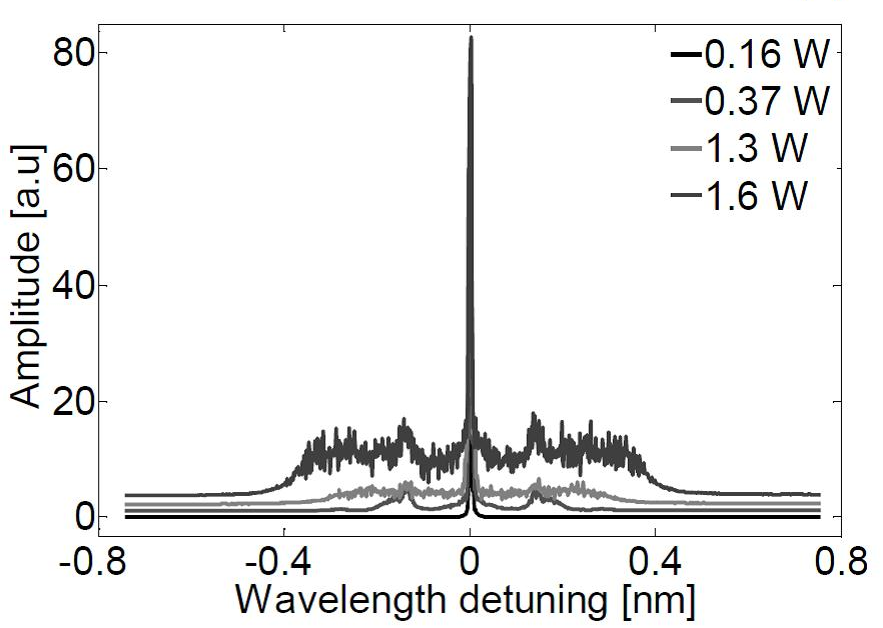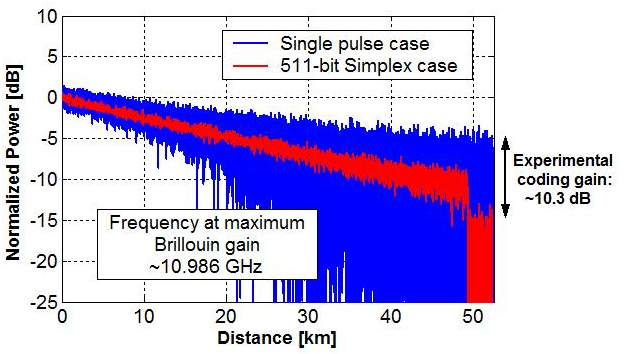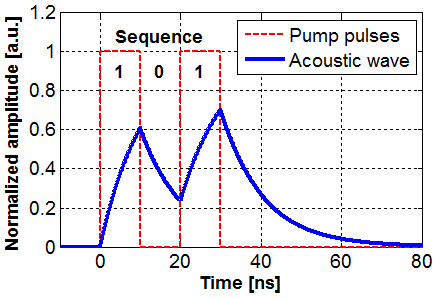Impact of nonlinear effects on optical fiber systems
Nonlinear effects constitute one of the main limiting factors in fiber-optic systems, such as telecommunication systems or optical fiber sensors. In most of the cases, in order to enhance the capabilities of such systems, the signal-to-noise ratio at the receiver has to be improved. One simple way to do this is by increasing the optical power at the transmitter side; however, as the optical power increases, some nonlinear effects start to affect the temporal and spectral characteristics of the transmitted optical signals at the receiver side, degrading the performance of the system. It is therefore critical to know the maximum optical power that can be launched into an optical fiber before the onset of nonlinear effects.
 The aim of this master project is to study quantitatively the influence of nonlinear effects, such as stimulated Raman scattering, self-phase modulation or modulation instability, on optical signals under different experimental conditions. The student will get basic knowledge on nonlinear processes in optical fibers and conduct experiments under different conditions to better understand why and how these processes impact on the normal operation of an optical system.
The aim of this master project is to study quantitatively the influence of nonlinear effects, such as stimulated Raman scattering, self-phase modulation or modulation instability, on optical signals under different experimental conditions. The student will get basic knowledge on nonlinear processes in optical fibers and conduct experiments under different conditions to better understand why and how these processes impact on the normal operation of an optical system.
Required knowledge: Basics in nonlinear fiber optics and MatLab programming. Knowledge of LabView will be helpful, but not required.
Supervision: Prof. Luc Thévenaz
Assistant: Andrey Denisov
Optical generation of gratings in optical fibers and their characterization
Recently, a promising technique based on stimulated Brillouin scattering (SBS) has been developed to optically generate a new type of gratings (reflectors) in optical fibers. This type of gratings can be applied to realize optical data memories, optical data processors, radio frequency photonic filters, as well as temperature and stress sensors. Compared to standard fixed fiber gratings, these SBS-based gratings offer several advantages: tunable operational frequency, tunable operational bandwidth, arbitrary position inside the fiber, variable reflectivity, etc. At the moment there are two ways to generate localized gratings inside an optical fiber: amplitude and phase modulation based techniques. In order to determine the application field of each of those techniques, the properties of the gratings generated by each method need to be compared.
The aim of this master project is to optically generate gratings inside a fiber using two different techniques and to utilize a probe wave to characterize their properties. The student will learn the principles of SBS, how to generate SBS-based gratings inside a fiber, build an experimental setup and characterize gratings using both techniques. This work is mainly lab-oriented.

(a) schematic diagram to generate DBG using amplitude or phase modulated pump waves. (b) Relative optical frequencies of interacting waves
Required knowledge: Fundamentals in fiber optics.
Supervision: Prof. Luc Thévenaz
Assistant: Nikolay Primerov
Realization of optical logic gates using dynamic Brillouin gratings
Optical signal processing is one of the primary fields of research to realize all-optical networks. Recently a technique based on optically-generated gratings has been proposed to perform various signal operations solely in the optical domain. In this way, an optical differentiator, an integrator and data time reversal have been successfully demonstrated using an all-optical system. For various systems logic gates are considered to be necessary building elements. Using the experience and knowledge of our group, we propose to a student a master project to investigate the possibility of realizing logic gates using optically-generated reflectors in optical fibers.
The aim of this master project is to generate AND and NOT all-optical gates using this new approach (see figures below). The student will learn theoretical principles of optically-created gratings and how to generate them inside an optical fiber, build an experimental setup and perform testing of the system for logic operations. This work is mainly lab-oriented.

Principle to realize DBG based logic gates: a) AND and b) NOT
Required knowledge: Fundamentals in fiber optics.
Supervision: Prof. Luc Thévenaz
Assistant: Nikolay Primerov
Enhancing Brillouin-based distributed optical fiber sensors using pulse coding techniques
For several years distributed temperature and strain sensors based on stimulated Brillouin scattering (SBS) have demonstrated to be an attractive alternative for many industrial applications. However, the typical low signal-to-noise ratio (SNR) of the measurements constrains the performance of this type of sensors mainly due to the well-known trade-off between spatial resolution, measurement time and sensing distance.
In the last years, the use of optical pulse coding techniques, similar to the ones used in radar systems, has demonstrated to provide a significant SNR enhancement in distributed optical fiber sensing, allowing for sensing distances beyond 100 km with a few meters spatial resolution (this is equivalent to several tens of thousands independent discrete sensors that can be replaced by a single interrogation unit).
(a) (b)
(b)
(a) SNR enhancement in a Simplex coded BOTDA system. (b) Behavior of acoustic wave with Simplex codes.
In this master project the student will first get familiar with standard distributed optical fiber sensing techniques based on stimulated Brillouin scattering as well as with suitable pulse coding methods. Then he/she will need to implement different coding methods for SBS-based sensors, analyzing the impact of several parameters, such as modulation format, extinction ratio of modulators, among others. For instance, the implementation of coding with different modulation methods should be investigated in the framework of this project. The work is mainly experimental; however, an important component in data processing using Matlab will be required.
Required knowledge: Nonlinear fiber optics, basic Matlab and Labview programming.
Supervision: Prof. Luc Thévenaz
Assistant: Dr. Marcelo Soto